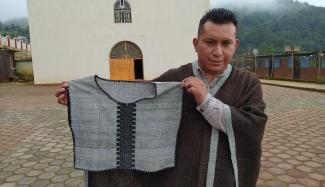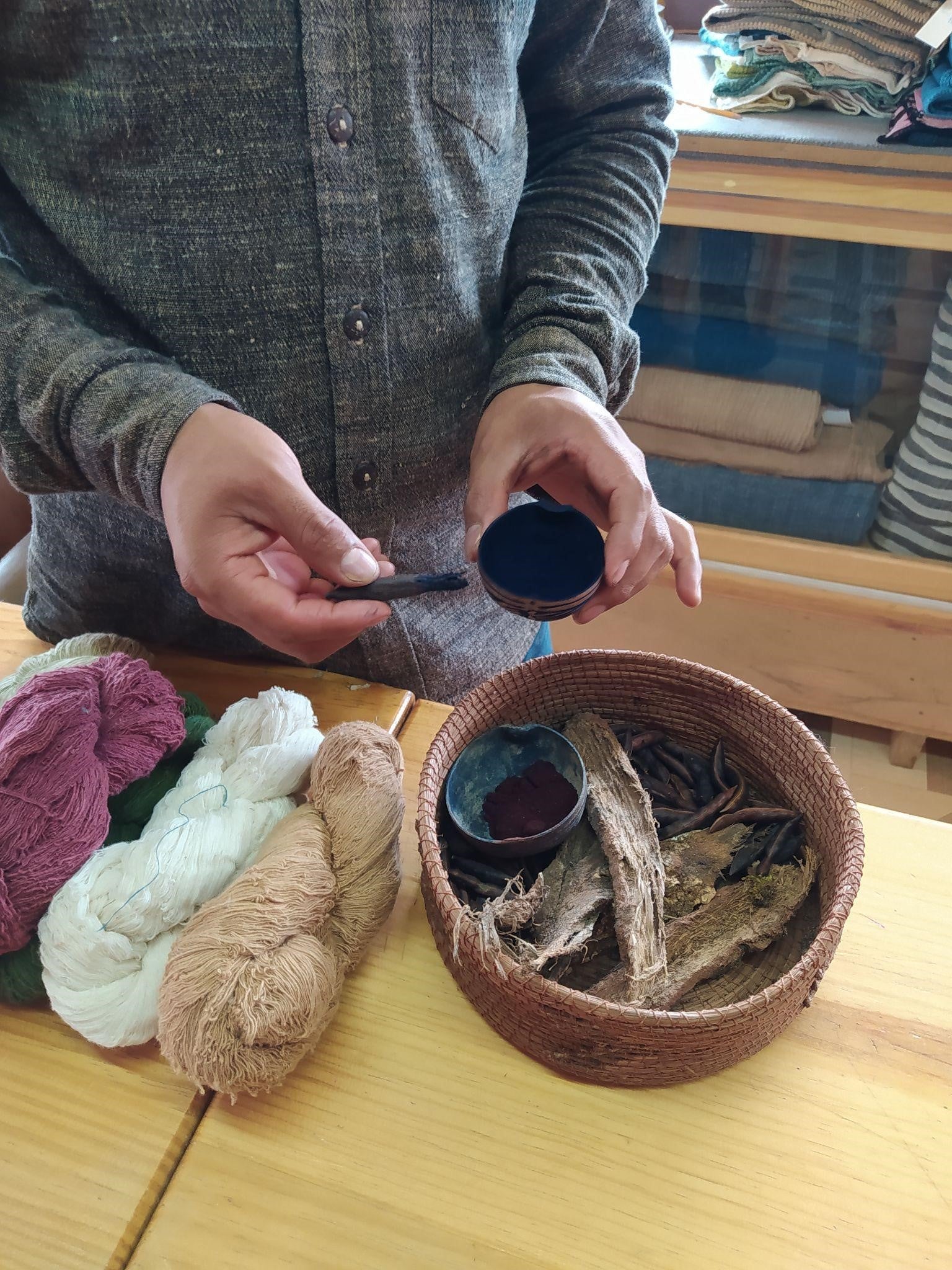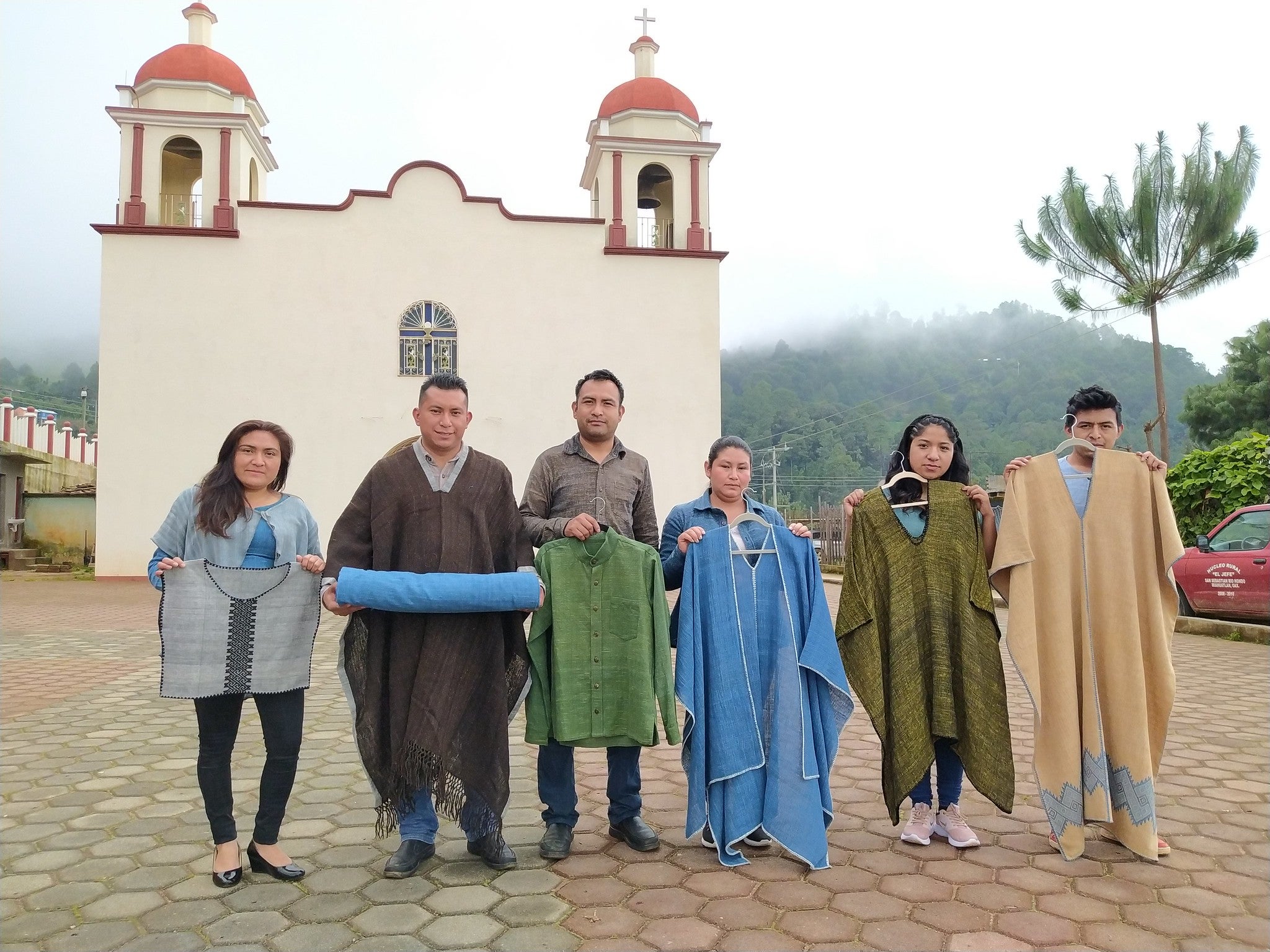
Eliseo Ramirez (Zapotec) was 23 when he decided to make a concerted effort to help revitalize his Zapotec culture. As an Indigenous artist and cooperative leader living in Oaxaca, Mexico, he keeps his culture alive through his business, Khadi Oaxaca, a collective of over 450 local families and artisans weaving intricate designs and creating beautiful works of art, and through weaving workshops, where cultural knowledge is passed down from generation to generation. “Spinning is something super beautiful and, as a young man, I love that there are so many young people interested in it. For example, a grandmother learned years ago, then she teaches her daughter, then the daughter teaches the granddaughter,” Ramirez says. “All this wisdom is being transmitted from generation to generation. It makes me feel as though we can shelter and help one another and create a coexistence of knowledge in the world.”
Everyone involved puts their heart and soul into their work, and the collective works hard to ensure that the art is made with natural materials in a sustainable way that causes no harm to the environment. Ramirez says, “We grow [cotton] without any pesticides or herbicides on the coast here in our state of Oaxaca. We also work with natural dyes like indigo, which is obtained from the community of Santiago Niltepec. We use oak bark; this is a very important material. We use the log for firewood and remove the bark and use it for dyes.” Ramirez aims to be a “light in the world,” exchanging knowledge freely with no envy or resentment and working in harmony with the natural world. “When I [talk] about being the light in the world, I also [mean] that we do not pollute the earth, we do not pollute the water,” he says.

Indigo and oak bark are used as dyes. Photo Courtesy of Khadi Oaxaca.
The collective has become an integral part of the local community, creating jobs so that people are not forced to migrate away from their homes in order to earn a living. The pandemic has negatively impacted members of the collective and their communities, threatening their livelihoods and economic stability. “The pandemic, it was a hard blow,” says Ramirez. “A year ago, I truly thought that our collective was going to close down forever because our sales in the months of April and May fell to zero.” But, with help from some friends and the power of social media, the collective has managed to stay afloat during uncertain times and sales are steadily beginning to increase again.
These sales are vital to the collective not only from a financial standpoint, but also because they represent the appreciation that the wider public has for the art. “ It really gives me a sense of satisfaction and accomplishment,” Ramirez says. “It makes me emotional because it takes us so many hours to make a product, and in the end someone appreciates it. It fills me with joy. Honestly, it fills me with happiness and it also motivates me to continue on with this project.” Ramirez draws inspiration from his family and public support for his work, and is motivated by the wisdom of his ancestors and the interest that his children show in the artistic process. “Khadi is everything to me,” he says. “Helping people is the best and it’s what I most enjoy doing. I do not want fame or wealth for myself, I want to share any achievements with all of the people that are involved.” The Cultural Survival Bazaars are annual celebrations of Indigenous arts, music, and cultures from around the world.

All in-person Cultural Survival Bazaars in 2022 are still postponed due to the pandemic. We have missed the in-person Bazaars and will soon announce the dates for the July 2023 Bazaar season. We hope to be together soon, safely, and in celebration of Indigenous art. Until then, please support and buy directly from our Bazaar artists by visiting our directory of artists at bazaar.cs.org.
Top photo: Eliseo Ramirez with a naturally dyed weaving. Courtesy of Khadi Oaxaca.
